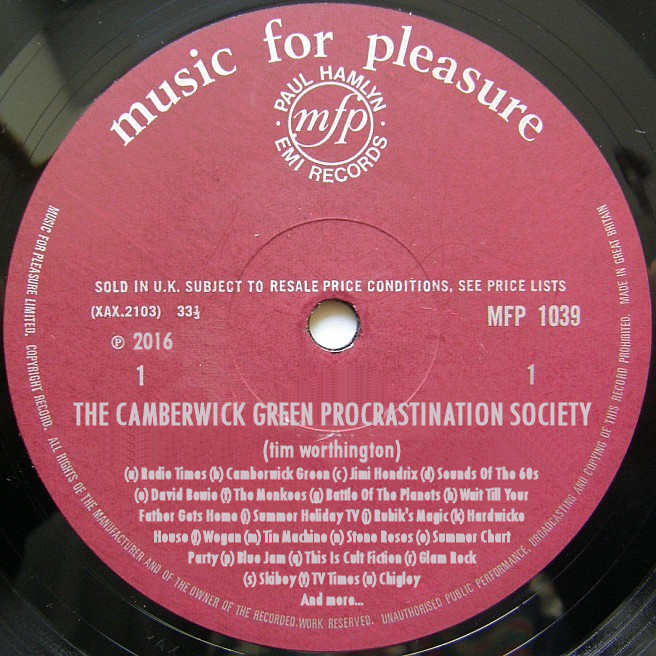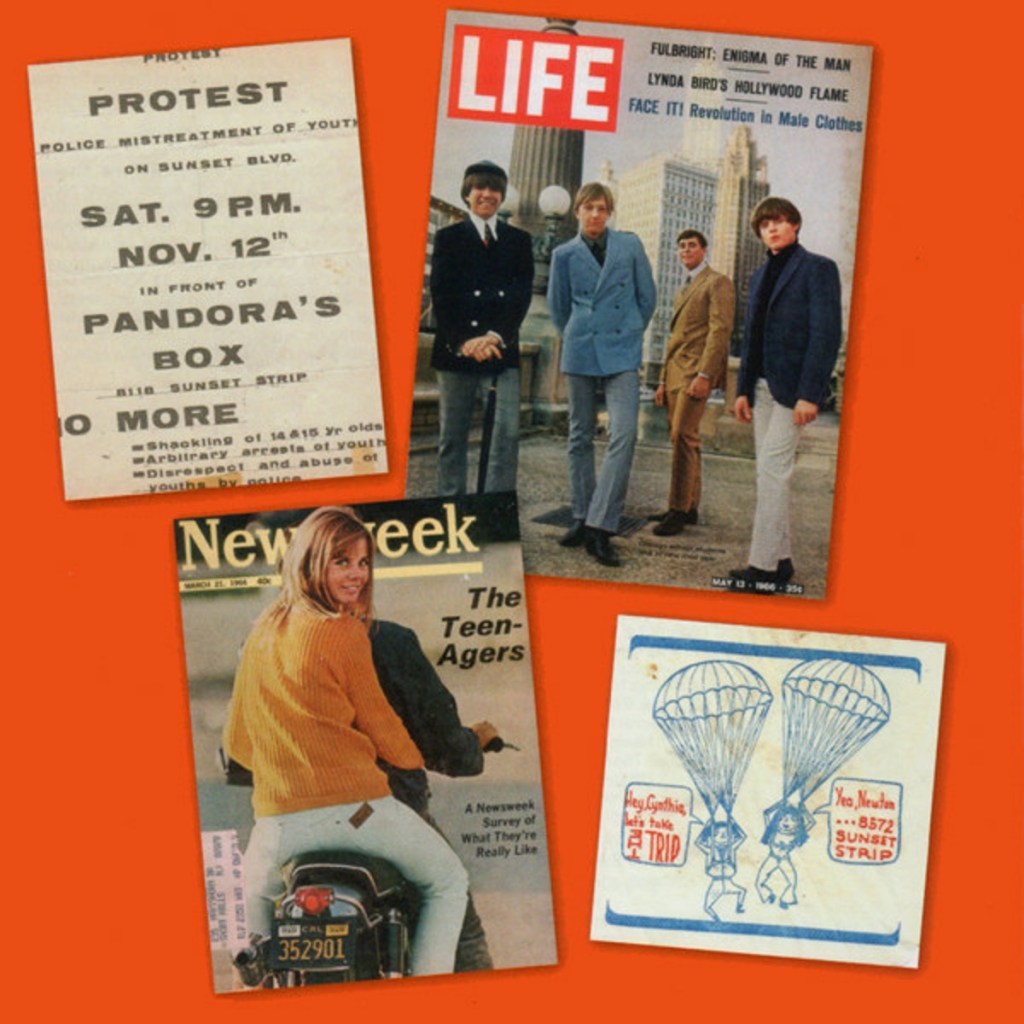For me, 1966 begins with a puppet clown staring forwards at terrified child viewers before yanking round a handle attached to a blackboard. It ends with Jonathan Miller herding a troupe of former Beyond The Fringe cast members and future Pythons around an eerie psychotherapy-tinged dreary Victoriana-hued Lewis Carroll retelling with sitars plunking all over the soundtrack. In between some jazzmen in lab coats scared audiences with co-ordinated scraping noises, a small army of small-screen comedy stars hared around London trying to make sense of a Robert Louis Stevenson-derived script, and over in the BBC’s Riverside Studios, Polly put Doctor Who’s hat on and nobody is quite sure why.
Several of you will already have noticed that the last on this list didn’t actually take place until the first few days of 1967. Some of you may also be voicing suspicion that filming for The Wrong Box might have started late in 1965. And that’s precisely my point here – this is an entirely subjective and impressionistic view of a year, and one that I have no first hand knowledge of at that, which cannot possibly fit entirely within a rigidly defined timeframe. And whether documentary makers and historians like it or not, the same will invariably be true of any overview of a ‘year’. You cannot tell the ‘story’ of a year simply because each is made up of a potentially infinite number of ‘stories’, usually spilling into more than one other year in either or both directions, and often with absolutely no impact or bearing on each other whatsoever. The 1966 that exists in my own frame of reference is all about a colourful yet also predominantly black and white expansion in the least regarded areas of the arts; for others, and particularly the overwhelming percentage of those who were there at the time, the reality will have been very different indeed.
Despite bearing the subtitle ‘The Year The Decade Exploded’, Jon Savage’s 1966 in fact deftly and deliberately avoids trying to present itself as a definitive document of that tricky twelve-month stretch. Instead, it concerns itself solely with how pop music mirrored aspects of rapid social upheaval and vice versa, maintaining an awareness throughout – and sometimes explicitly forming part of the narrative – that there were huge swathes of international society whose lives were not touched by any of this in any way at all. Key to this is Savage’s tactic of diving the book up into twelve months and twelve pop singles that reflected the key sociocultural themes and obsessions of each; these range from the expected likes of Good Vibrations and 19th Nervous Breakdown to records that, like The Quiet Explosion by The Uglys, you could be forgiven for having assumed that only you knew about. Norma Tanega’s Walkin’ My Cat Named Dog introduces the first stirrings of radical gender politics, Joe Meek’s shockingly camp Do You Come Here Often? points to how the still legally persecuted gay community went in entirely the opposite direction, Wilson Pickett’s Land Of 1000 Dances is contrasted with the growing resentment and unrest of Black America, and Love’s 7 And 7 Is is on hand to remind us all that not everyone thought that peace and love was the ‘answer’. There’s even Winchester Cathedral by The New Vaudeville Band, which as you’re imagining takes some explaining.
There are literally hundreds of other records fitted in and around all of this, from the likes of 13th Floor Elevators and The Velvet Underground And Nico, through The Yardbirds and The Monkees, right up to popular crooners and stray retired military men that some lunatic decided could sing and the often decidedly non-‘Easy’ reasons behind their surges in popularity. Needless to say The Beatles sit at the centre of it all, though as a fractious, dissolute and often downright nasty presence, producing their finest work at the same time as apparently not wanting to be there at all. If there’s one thing that you cannot accuse this book of, it’s following a cliched narrative.
Clocking in at such a hefty size that Sir Arthur Streeb-Greebling would market it as a pocketbook – and yes, Peter Cook and Dudley Moore are in there too – 1966 is a fine and meticulously researched work that if nothing else will expose you to a whole new library of pop music that you had never heard of previously; nobody reading it will have heard everything in it. My one criticism would be that there are moments when it conflates events in the UK and USA too heavily as influences, when they more than likely had little direct correlation, especially in the earliest days of mass communication. Chances are that whatever battles with The Great Society were raging in America, those loudly-shirted scamps clogging up Tottenham Court Road and BBC2 arts shows had drawn much greater inspiration from Adam Adamant Lives! and post-Pop Art advertising and supermarket packaging. And maybe we’re going to be taking a look at another book that explores that very argument very soon…
Get 1966 – The Year The Decade Exploded
You can get 1966 – The Year The Decade Exploded from Faber & Faber here or from Amazon here. There’s also a soundtrack CD available from Ace Records here.
Buy A Book!
There’s much more on 1966, psychedelic pop, television weird-outs and Camberwick Green (which technically combines all three) in my anthology The Camberwick Green Procrastination Society. The Camberwick Green Procrastination Society is available in paperback here or from the Kindle Store here.
Alternately, if you’re just feeling generous, you can buy me a coffee here. Apparently there’s a craft beer called 1966 Coffee, though, so be careful not to get that by mistake.
Further Reading
Wound Up And Ready To Play is a feature looking at that first broadcast of that first episode of Camberwick Green, and the impact that it must have had on viewers – surely one of the less celebrated cultural milestones of 1966; you can find it here. All Fall Down And Lost In The Mystery is a feature on the enduring mystery of The Beach Boys and SMiLE – and what happened to the album once they solved it – which you can find here.
There’s plenty of background on The Beach Boys and SMiLE – and some speculation on what might have happened if it actually had been released in 1966 – in Rob Chapman’s excellent book Psychedelia And Other Colours; you can find You Can’t Seem To Find How You Got There, So Just Blow Your Mind, my thoughts on some of the questions posed and answered by Psychedelia And Other Colours, here.
Further Listening
Jonathan Miller’s interpretation of Alice In Wonderland one of my choices when I appeared on Perfect Night In – along with the BBC’s edits of The Monkees – which you can hear (and watch) here. You can also find me chatting about The Wrong Box on Goon Pod here.

© Tim Worthington.
Please don’t copy this only with more italics and exclamation marks.



